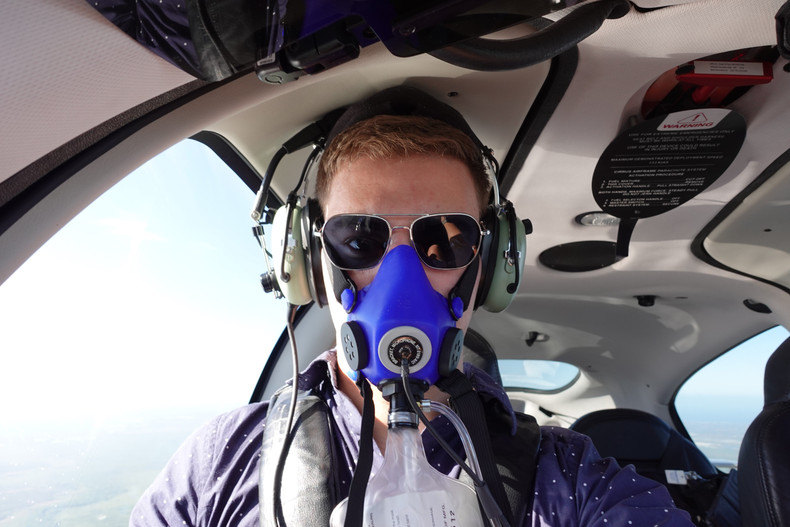“Unable to control Altitude”
“Unable
to control Airspeed”
“Unable
to control Heading”
“Other
than that….everything is A-OK”
The YouTube video of Kalitta 66 has been watched over 1.4 million times. Kalitta 66 was a Lear 35 that slowly lost pressurization in the Flight Levels, causing the crew to suffer from unrecognized extreme hypoxia above FL260. The pilot’s voice is slurred and barely intelligible. The chilling phrase “other than that, everything is A-OK” highlights how insidious hypoxia is – even in extreme cases like this one. As the Kalitta 66 crew descends to 11,000 feet, the co-pilot comes on the radio and sounds loud and clear and completely normal again, as if nothing happened.
Hypoxia Clouds Judgment
The reason this video is so compelling is that it provides a clear view of the effects of hypoxia on a well-trained and professional crew and demonstrates how hypoxia can cloud judgment, decision making, and motor skills without the pilot even recognizing it. (Just search “Kalitta Hypoxia” on YouTube and it immediately comes up).
14 CFR Part 91.211
Pilots who frequent the flight levels are well-versed in the need for and use of supplemental oxygen systems. The need for oxygen in high-performance gliders is well established and is also bound by the regulatory framework of 14 CFR Part 91.211. This regulation is chiseled into the brain of every student pilot prior to taking their private pilot written and flight test. Altogether now…” Oxygen is required for crewmembers above 12,500 for any portion of flight above that altitude that exceeds 30 minutes duration, at any time above 14,000 feet, and passengers are required to be provided with oxygen above 15,000…”)
Does "Compliance Equal Safety"?
As a flight instructor, I think we do our students a disservice if we stop the conversation there, however. In a former role running a Part 135 operation, I had our Principle Inspector emphatically tell me that “Compliance Equals Safety.” In other words, his view was that if you comply with the regulations your operation is safe by definition. Part 91.211 falls short of this goal in several ways, however. It is important for us to have honest discussions with our students about the practical use of oxygen and when it should really be used. The benefit is that more pilots will use oxygen in their day-to-day soaring which will make pilots more alert, less fatigued, and safer.
Interestingly, 14 CFR Part 91.211 was formalized on June 17, 1970, after being published as an NPRM three years earlier. In the Supplementary Information published with that Final Rule, it was noted that “One commentator recommended that the altitude limit of 12,000 feet specified in the proposed Sec 91.32(a)(1) (the precursor to Sec. 91.211) be increased to 12,500 feet to provide an additional westbound VFR cruising altitude.” The FAA concurred, saying “The recommendation has merit.” In addition, it was also recommended that the maximum altitude without supplemental oxygen actually be lowered to 10,000 to align with Part 135 and Part 121. The FAA declined to do this because in its words, “A change based on this recommendation would constitute a substantive change in the proposal outside the scope of Notice 67-30.” Therefore, the FAA raised the maximum ceiling without oxygen for pilot convenience and declined to reduce it for theirs.

